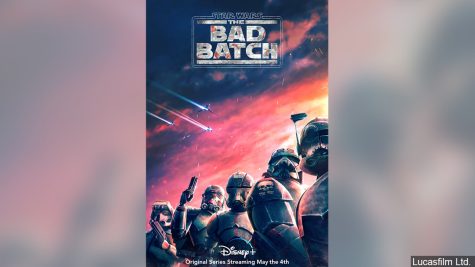REVIEW: ‘Velvet Buzzsaw’ is a fun slasher, but its message doesn’t quite stick
February 3, 2019
Dan Gilroy’s “Velvet Buzzsaw” is an enjoyable, campy satirical thriller that works a lot better when you don’t consider how you’re watching it.
“Velvet Buzzsaw” was highly anticipated heading into 2019 as it marked the Gilroy and star Jake Gyllenhaal’s first collaboration since 2014’s critically acclaimed “Nightcrawler.” Five years later, instead of at tabloid style journalism, Gilroy shines a light on the commercialization of art and art criticism.
FILM FACT BOX
Title: Velvet Buzzsaw
Director: Dan Gilroy
Starring: Jake Gyllenhaal, Rene Russo, Toni Collette, Zawe Ashton, Tom Sturridge, Natalia Dyer, Daveed Diggs, Billy Magnussen, John Malkovich
Writer: Dan Gilroy
Runtime: 113 minutes
The plot springs into action when a rising art dealer named Josephina (Zawe Ashton) finds a dead man in her apartment complex and discovers he’s an artist — not just any artist, though. His paintings are masterpieces with exorbitant prices. In order to impress her high-strung boss, Rhodora Haze (Rene Russo), Josephine makes off with the paintings.
At the same time, her lover and noted art critic, Morf Vandewalt — that’s the character’s actual name, swear to God — becomes entranced with the late, undiscovered artists’ work and decides to write a book. That’s when everything goes haywire and “Velvet Buzzsaw” transforms into a moderately cheesy yet endlessly fun slasher.
There are many different battles being fought simultaneously throughout “Velvet Buzzsaw,” between art dealers, artists and art critics, but also within those people’s own psyches. Gilroy seems to have chosen his side earlier, portraying Gyllenhaal’s critic character as a pretentious writer (at one point, he says he is “ensorcelled”), finding little to no joy in the media he analyzes, but rather doing so to advance others’ craft.
At the same time, the lavish spending of the satirical art world portrayed in the movie inevitably removes authenticity from the very art it’s peddling. The scene that plays over the end credits shows how the film perceives those who do art for the sake of creation, a happier, peaceful existence veering toward serenity.
This, at its core, is really what film — and, more broadly, art — embody: creation for creation’s sake, not for money, influence, power. But it’s nearly impossible not to question the movie’s altruism. “Velvet Buzzsaw,” by the word’s definition, is art. And perhaps it really is Gilroy’s singular vision for the film just to exist, but anyone away from the festival circuit watching the film will be doing so on Netflix.
There’s nothing wrong with an artist being compensated for his art; in fact, it should be commonplace. But it’s hard to completely get on board with Gilroy’s vision when his treatise against the commercialization of art can be found exclusively on a multi-hundred-million-dollar, international streaming giant.
The point gets across, but maybe it can’t be received as selflessly as maybe the filmmakers had hoped.
That being said, the film we do receive is well made, with interesting performances, specifically from Russo. Once “Velvet Buzzsaw” is done setting up its plot and really starts going haywire about 80 minutes in, it reaches its stride with some delightfully creative death scenes, culminating in an unforgettable ending as our three main characters grapple with their decisions.
It’s not nearly as successful as “Nightcrawler,” but Gilroy and Gyllenhaal have again delivered an interesting movie worth watching, even if the contemporary film climate doesn’t let its true message reach its full potential.
GRADE: B-
Cameron Hoover is a film critic. Contact him at [email protected].

























